Affordable 3D Printing: Techniques and Impact
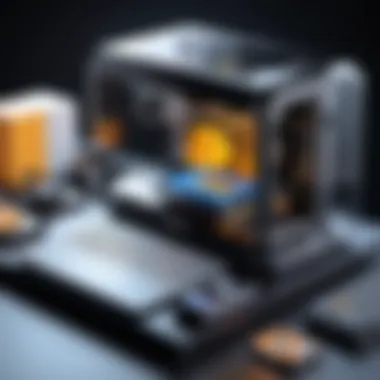
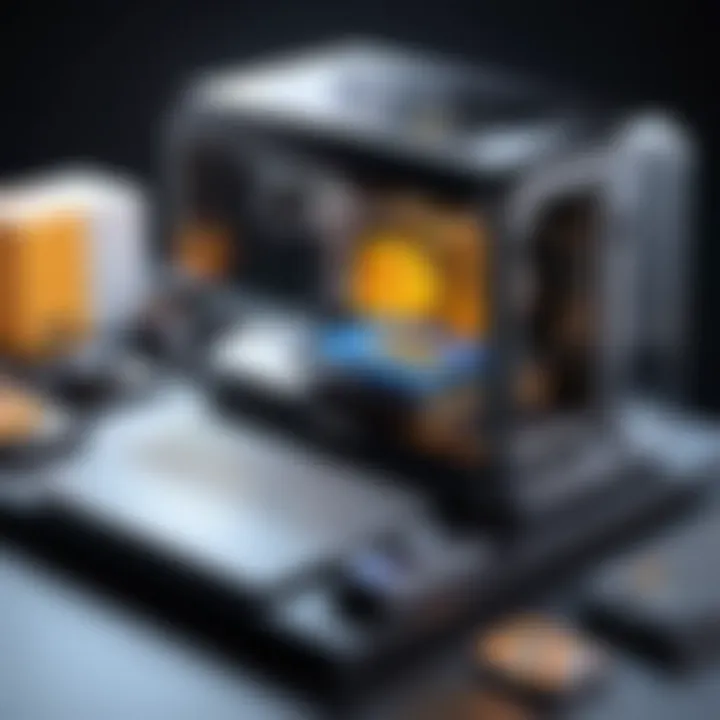
Intro
In recent years, the realm of 3D printing has witnessed a notable shift towards affordability. This democratization of technology is more than just a buzzword; it's a catalyst that transforms how industries function. From concept to final product, the implications of 3D printing stretch across various domains, including healthcare, manufacturing, and creative industries. With a myriad of techniques emerging, paired with advancements in hardware and software, the landscape for affordable 3D printing has never looked so promising.
The growing accessibility of this technology opens doors that were once bolted tight. Individuals and small businesses can now produce bespoke items with minimal upfront investment. This article will dissect the multifaceted aspects of 3D printing, covering everything from the latest trends and innovations to sustainability considerations and material choices. By providing a thorough analysis, we aim to showcase how this technology is providing both opportunities and challenges, ultimately reshaping the future of design and manufacturing.
Preamble to 3D Printing
The world of 3D printing has carved out a unique niche in the technological landscape, becoming an integral part of various industries. Understanding the introductory elements of 3D printing is crucial because they set the stage for appreciating its affordability and accessibility. The journey into 3D printing is not merely about the capability to create physical objects from digital designs; it taps directly into a well of innovation and creativity that redefines manufacturing and design processes.
Definition and History
3D printing, also known as additive manufacturing, refers to the process where three-dimensional objects are created layer by layer from a digital file. This technology has roots stretching back to the 1980s when Chuck Hull invented stereolithography, a method that solidifies liquid resin layer by layer. This concept, while nascent at the time, has undergone dramatic transformations over the decades and has led to multiple methods, such as Selective Laser Sintering, Fused Deposition Modeling, and others. Each evolution has contributed to refining processes and enhancing precision, ultimately expanding the possibilities of what can be created.
The history is critical because it illustrates how far this technology has come. Early 3D printers were prohibitively expensive and primarily found in industrial settings, but as development progressed and technological barriers were dismantled, the landscape shifted dramatically. Nowadays, even hobbyists and small businesses can get their hands on affordable 3D printing solutions, which fuels creativity and supports makers around the globe.
Significance in Modern Technology
The significance of 3D printing in modern technology is profound. It acts as a conduit for innovation that spans industries from healthcare to aerospace. For example, in medicine, 3D printing is contributing to personalized treatment methods by allowing for the creation of bespoke prosthetics and even organs using bioprinting techniques. When it comes to engineering, the capacity to produce prototypes rapidly fosters an environment where ideas can be tested and iterated without the excessive costs that traditional manufacturing incurs.
Moreover, it democratizes the production landscape. The ability for anyone with a decent 3D printer and a creative spark to bring their ideas to life can foster unprecedented levels of creativity and entrepreneurship.
"3D printing is not just a technology; it's a revolution that enables individuals and companies to rethink what is possible in production, design, and beyond."
The accessibility and evolving affordability of 3D printing techniques mark a critical shift in how goods are developed and produced. As these innovations permeate various sectors, understanding the fundamental aspects of 3D printing becomes even more important, positioning it as a pivotal element in the conversation about the future of technology.
Understanding Affordability in 3D Printing
The importance of understanding affordability in 3D printing cannot be overstated. This concept is not simply about having the cheapest option; it involves a delicate balance of quality, accessibility, and innovative potential. As the field has evolved, affordability has transitioned from merely being a debate between low costs and high-quality outputs to a complex network of materials, technologies, and possibilities. Embracing this understanding opens the doors to creative solutions tailored to various industries, from healthcare to design, thus amplifying the technology's transformative power.
Factors Influencing Cost
When exploring the cost structure of 3D printing, several factors come into play:
- Hardware Expenses: The initial purchase of 3D printers can vary wildly. The market offers a range from DIY kits that may cost a few hundred dollars to sophisticated industrial machines that can reach tens of thousands. Selecting the right printer hinges on specific needs, often dictating long-term financial commitments.
- Material Selection: The choice of filament or material greatly impacts costs. For instance, PLA filament is generally more affordable than ABS, yet it may not suit every application. Understanding the characteristics of these materials can lead to better selections that satisfy production needs without overspending.
- Operational Costs: This includes maintenance, electricity consumption, and even the cost of software licenses. Regular upkeep of the printer is crucial to maintain quality; neglecting it could lead to poor outputs and waste of material.
Each of these components intertwines, illustrating that affordability extends deep beyond the initial investment. It’s crucial to analyze how these costs stack up in the long term.
Market Trends Driving Prices Down
The 3D printing market is not stagnant; it's constantly evolving. Here are two significant trends driving costs lower:
- Increased Competition: As more companies enter the field of 3D printing, the competition intensifies. This competitive spirit pushes companies to sharpen their pricing strategies, leading to lower prices for consumers.
- Technological Advancements: With new technologies like fused deposition modeling and digital light processing coming to the forefront, manufacturers are achieving efficiencies that lower production costs. Streaming processes and smart integration are optimizing designs and reducing waste, further contributing to affordability.
An interesting observation is how these trends create a feedback loop. As costs decrease, accessibility increases, inviting a larger pool of innovators and hobbyists into the market, which in turn breeds more competition and innovation.
"Understanding affordability in 3D printing is key to tapping into its transformative potential in various sectors."
Through these lenses, the discourse around affordability demonstrates that it is not a singular element but rather a multilayered concept that can significantly alter the landscape of manufacturing and design.
Technological Innovations Contributing to Affordability
The landscape of affordable 3D printing has rapidly evolved, largely due to technological innovations that play a pivotal role in making this once-exclusive technology accessible to a wider demographic. In today's world, these advancements not only lower the cost of producing 3D printed items but also enhance the quality and versatility of the final products. By examining the specific elements at play and their implications, one can appreciate the transformative power of technology in this sector.
Advancements in Printing Technology
At the heart of affordability in 3D printing lies a series of breakthroughs in printing technology. The recent proliferation of desktop 3D printers, such as the Creality Ender and Prusa i3, demonstrates how accessible this machinery has become. These models provide excellent quality at a fraction of the cost of earlier professional printers. New technologies like Fused Deposition Modeling (FDM) and Stereolithography (SLA) are constant reminders of how efficiency and precision can be expedited without breaking the bank.
Print speed has also improved significantly. Some newer printers can complete larger jobs in a fraction of the time their predecessors required. Faster printing doesn’t just save time; it makes batch production more feasible, which is essential for small businesses looking to compete with established manufacturers.
Key benefits include:
- Increased precision: Modern printers utilize refined algorithms and sensors to improve layer adhesion and minimize defects.
- Reduced waste: Innovations such as adaptive slicing allow for less material to be used without sacrificing strength or quality.
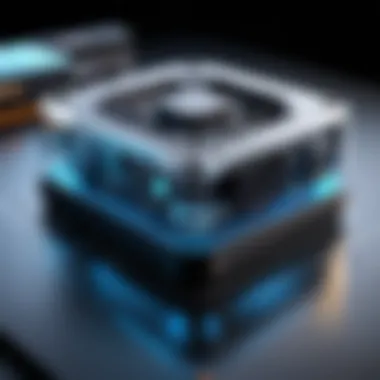
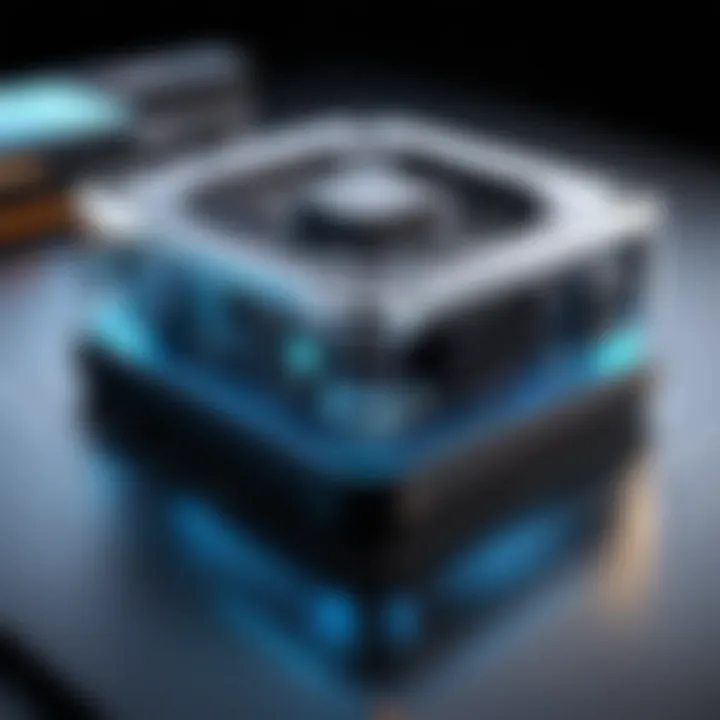
Moreover, advancements like dual extrusion capabilities enable the printing of complex designs using multiple materials, adding an extra layer of functionality that wasn’t economically feasible before.
Open Source Software Solutions
Alongside hardware innovations, open source software solutions have become a game changer in the realm of affordable 3D printing. Platforms like Cura and Slic3r offer software that is not only free but also continuously updated through collaborative efforts from the online community. This drastically reduces the costs associated with proprietary software licenses, which can be quite steep.
Using open source software, individuals can tailor their 3D printing settings to meet specific needs – which is particularly helpful when working with unusual materials or intricate designs. This community-driven approach means that improvements to the software often emerge from real-world user feedback, further enhancing its functionality.
Benefits of open source solutions include:
- Customization: Users can modify the code to suit personal requirements, enhancing flexibility and effectiveness.
- Community support: A vast community of makers can help troubleshoot problems and share tips, reducing downtime.
"Open source not only democratizes technology; it cultivates innovation by tapping into the collective minds of users worldwide."
Materials Used in Affordable 3D Printing
The materials utilized in 3D printing play an indispensable role in defining not only the quality of printed objects but also the potential applications of this innovative technology. As 3D printing becomes more accessible, understanding the variety of materials available and their respective characteristics can open the door to creative expression and functional manufacturing that was previously out of reach for many individuals and businesses alike.
Commonly Used Filaments
When it comes to the most widely used materials in affordable 3D printing, filaments often come to the forefront. The choice of filament can significantly influence everything from the durability of the printed object to the ease of printing itself. Here are some key materials frequently chosen for their affordability and versatility:
- PLA (Polylactic Acid)
This thermoplastic is derived from renewable resources like corn starch and sugarcane. It’s an excellent option for beginners due to its ease of use. PLA produces low emissions when printed and has a lower risk of warping compared to other materials, making it a popular choice for hobbyists. - ABS (Acrylonitrile Butadiene Styrene)
Known for its toughness and flexibility, ABS is often used for products requiring high impact resistance. It’s used in familiar objects like LEGO bricks. However, it can emit fumes during printing, so proper ventilation is necessary. - PETG (Polyethylene Terephthalate Glycol)
Striking a balance between ease of use and strength, PETG is gaining traction among 3D printing enthusiasts. It offers good impact resistance and is less likely to warp than ABS. Its recyclability can also be a strong point for environmentally-conscious makers. - TPU (Thermoplastic Polyurethane)
This material provides flexibility and durability, making it suitable for producing parts that require bending or compression. However, the printing process can be more challenging due to its elastic nature.
These materials have become the go-to choices for many developing projects due to their balance of cost, performance, and availability. According to user forums on reddit.com, these filaments are regularly discussed among enthusiasts exploring the spectrum of 3D printing capabilities.
Emerging Materials and Their Cost-Effectiveness
As the field of 3D printing continues to evolve, so does the range of materials available to creators. Emerging materials not only promote innovative applications but also bring a new layer of cost-effectiveness to the table.
- Nylon
Known for its strength, flexibility, and toughness, nylon is becoming a viable option for functional prototypes and end-use products. Its slightly higher cost can be justified by the durability it provides, making parts that are robust and capable of handling stress. - Wood Filaments
Composed of a mix of PLA and finely powdered wood, these filaments offer an aesthetic touch. Objects printed with wood filaments can be sanded, stained, and polished. This versatility allows for artistic expression that is often appealing for craftsmen. - Metal Composites
These filaments are a blend of plastic and metal particles, allowing makers to print objects that mimic solid metal in appearance and weight. Using metal composites can result in cost savings when compared to conventional metal manufacturing processes. Users increasingly mention this in threads on platforms like facebook.com. - Recycled Materials
The rise of sustainability trends has led to materials derived from recycled plastics. These are not only cost-effective but environmentally friendly. Their use is an exciting development, allowing creative thinkers to contribute positively while saving on material costs.
"The advent of recycled materials in 3D printing is game-changing; it showcases our capacity for sustainable practices in tech while enabling creativity to flourish."
By examining the various materials in this realm, it’s clear they shape the future of what is possible through affordable 3D printing. Their evolution will directly influence how industries and individuals harness this transformative technology, making it an exciting time for both seasoned makers and new entrants alike.
Applications of Affordable 3D Printing
The shifting landscape of production and design is increasingly influenced by applications of affordable 3D printing. This technology is not just about personal creativity; it holds significant potential for various sectors, driving innovation while also reducing costs. The democratization of fabrication techniques means that individuals and small businesses can now compete with larger corporations.
Consumer Products
The consumer products sector has seen a substantial impact from affordable 3D printing. Everyday items like phone cases, custom jewelry, and unique home decor can now be produced at a fraction of the traditional costs. Manufacturers are leveraging this technology to create personalized products that cater to niche markets. As is noted, even household items can be tailored to individual preferences without a significant increase in expenses. The ability to produce low-volume, high-variant items leads to enhanced customer satisfaction.
Moreover, with platforms like Thingiverse, users can access countless designs and share their own creations, fostering a culture of DIY while keeping costs low. The ease of access to 3D printers encourages not only innovation among consumers but also promotes local economies as small businesses rise to meet this new demand.
Medical Uses
In the medical field, affordable 3D printing is nothing short of revolutionary. Custom prosthetics and dental implants are being produced at lower costs and with quicker turnaround times than before. Surgeons use 3D models for pre-surgical planning, enabling better outcomes for patients. The precision of 3D printing allows for individual specifications, resulting in a perfect fit that enhances usability and comfort.
As an example, the Stratasys J750 printer is allowing hospitals to create anatomical models that aid in surgical planning. These tailored models are helping in understanding complex cases before actual surgery takes place. Thus, the merge of affordability with technology is improving patient care significantly.
"The potential applications of 3D printing in medicine are boundless. Customization of products and prototypes caters closely to individual needs, reshaping standards in healthcare."
Prototyping and Manufacturing
Prototyping has historically been a costly and time-consuming phase of product development. With affordable 3D printing, this process benefits greatly from reduced costs and increased flexibility. Businesses can now create prototypes in-house using desktop printers, allowing for rapid iterations and testing.
Instead of outsourcing prototypes, companies can print revisions in a matter of hours, which enables them to pivot quickly based on feedback or new insights. The ability to iterate rapidly helps shorten lead times, often translating into faster product development cycles.
Manufacturers are also exploring how 3D printing can streamline their production processes. By using additive manufacturing methods, they can minimize waste and use only the materials necessary for the product. This not only reduces costs but can also lead to environmentally friendly practices that are increasingly vital in today’s market.
Ordinarily, longer production runs are cost-effective, but the role of 3D printing blurs these lines by allowing short runs without a significant cost penalty.
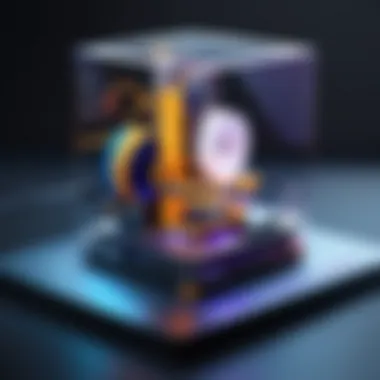
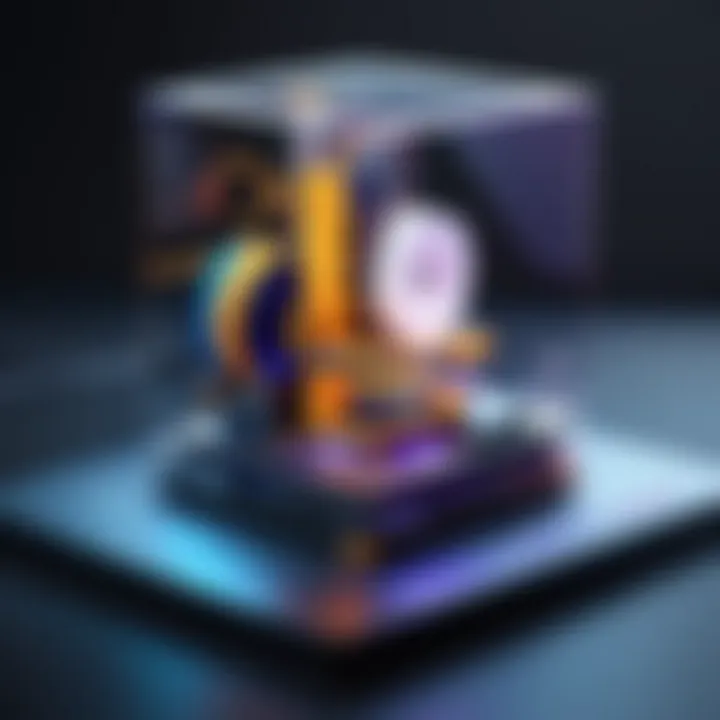
In summary, the applications of affordable 3D printing span an impressive array of sectors that are reshaping traditional frameworks. Embracing these advancements not only enhances efficiency and personalization but also expands the creative landscape for individuals and businesses alike.
The Role of Communities in Advancing 3D Printing
Communities play an essential part in the advancement of affordable 3D printing. These networks create opportunities for sharing knowledge, resources, and experiences that can often be more valuable than any single innovation or breakthrough.
Through collaboration and engagement, individuals and groups come together to push the boundaries of what is possible in 3D printing. This section will delve into the specific elements that highlight how communities contribute to this ever-evolving technology.
Maker Spaces and Workshops
Maker spaces and workshops offer a haven for enthusiastic creators. These spaces are equipped with various tools and resources, including 3D printers, that individuals can access at a reduced cost or sometimes even for free. The communal atmosphere fosters an environment where idea-sharing flows freely, leading to innovative projects that might not be feasible in a traditional setting.
Some key benefits of maker spaces include:
- Access to Equipment: Individuals without the financial means to buy expensive 3D printers can use these facilities to bring their ideas to life.
- Skill Development: Workshops often provide training sessions, enhancing skills in design, programming, and machine operation.
- Networking Opportunities: These spaces attract diverse individuals, creating connections that can lead to collaborative projects.
For instance, the MakerBot community has established various workshops that encourage learning among users of all levels. It's a prime example of how localized efforts can spark innovation on a larger scale, ensuring that knowledge is not locked away but rather shared among enthusiasts.
Collaborative Projects and Innovations
Collaborative projects are another avenue through which communities advance 3D printing technology. By pooling resources, skills, and ideas, individuals can tackle larger and more complex projects than they would dream of tackling solo. The beauty of collaboration lies in its diversity; each unique perspective contributes to richer, more dynamic outcomes.
Consider these aspects of collaborative projects:
- Rapid Prototyping: Teams can iterate designs quickly, making it easier to experiment and adapt.
- Cross-Pollination of Ideas: Different fields can come together, combining knowledge from areas like engineering, art, and education, leading to innovative and unexpected results.
- Problem Solving: Groups often face challenges that require collective brainstorming and collaborative solutions, further driving advancements in techniques and methodologies.
Examples of successful collaborative ventures can be found across platforms like reddit.com, where users share their projects and seek advice from the broader community. This not only accelerates the learning process but also inspires others to participate, creating a snowball effect of innovation.
"In community-led initiatives, one plus one can equal three; collaboration creates synergy that simply isn't achievable alone."
Communities remain the heartbeat of affordable 3D printing, ensuring that this technology reaches its full potential. With new ideas emerging daily and passionate individuals sharing their journeys, the future of 3D printing will certainly be community-driven, pushing boundaries and creating lasting impacts across industries.
Challenges in Affordable 3D Printing
Addressing the challenges surrounding affordable 3D printing is paramount not just for designers and makers, but for the entire ecosystem that stands to benefit from this technology. As 3D printing becomes more accessible, it also faces certain hurdles that need careful navigation. These challenges impact not only the technical aspects but also have wider implications in quality, trust, and creativity. In this discussion, we will delve into two significant issues: quality control and intellectual property concerns.
Quality Control Issues
Quality control in 3D printing is somewhat like walking a tightrope. On one side, there's the ambition to create innovative and unique designs, but on the other side, there's the reality that the output may not always meet expectations.
When you’re working with cost-effective materials and printers, variability can pop up. For example, variations in filament quality can lead to under-extrusion or even clogs in the printer nozzles. This isn’t just a minor annoyance; it can compromise the integrity of the final product. Amateur enthusiasts might overlook these subtleties, leading to the production of sub-par prototypes, which in turn could damage reputations and stall potential opportunities.
Moreover, the inherent layers in 3D printing can bring about mechanical weaknesses, affecting structural durability. To combat this, enthusiasts need to adopt rigorous testing protocols. Here’s a concise breakdown of the essential steps:
- Calibration of Printers: Regularly calibrating machines ensures consistent output and reduces defects.
- Use Quality Filaments: Opting for reputable brands, even if slightly more expensive, can prevent many printing issues.
- Post-Processing Techniques: Employing methods like sanding and refining can enhance surface qualities and strengthen printed items.
Each step adds safeguards against potential problems. An emphasis on quality leads to trustworthiness, which is vital in a market teeming with options.
Intellectual Property Concerns
Intellectual property (IP) is another complex area that has both creators and industries looking over their shoulders. The ease of digital modeling and replication means that original designs and concepts can be easily copied. In simpler terms, while technology makes it a breeze to produce stunning designs, it also invites a wave of potential legal disputes.
Consider this scenario: a small design studio creates a fabulous plant holder. With a few clicks, anyone with a printer can replicate it, often without compensation or credit to the original artist. This creates a delicate balance between innovation and protection. Many designers find themselves in a quandary—how can they protect their work without stifling creativity?
To address these concerns, the following options are available for creators navigating this tricky landscape:
- Licensing Agreements: Artists can set the terms for how and when their designs can be used or reproduced.
- Creative Commons: Using platforms that allow for customizable sharing agreements can provide some measure of protection.
- Education and Awareness: Informing the community about IP laws not only protects creators but also fosters a respectful culture among makers.
“In a world where creativity and duplication coexist, understanding the spectrum of intellectual property is imperative for safeguarding innovations.”
Navigating these challenges is no small feat. However, a proactive and informed approach can carve out a sustainable path for affordable 3D printing while ensuring that quality and creativity go hand in hand.
Future Prospects of Affordable 3D Printing
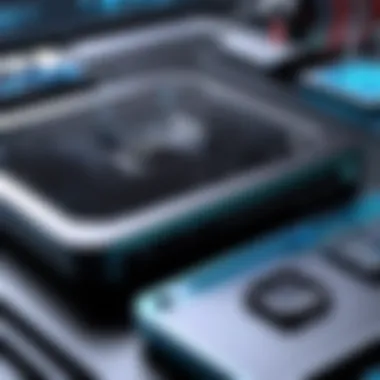

The future landscape of affordable 3D printing is not merely a continuation of current trends; rather, it’s a bold leap into unexplored territory filled with potential innovations and societal shifts. This section highlights several crucial aspects that will shape how 3D printing evolves. As technology progresses, understanding its implications helps consumers, businesses, and educators to navigate the changing paradigms.
Emerging Technologies
Emerging technologies play a pivotal role in shaping affordable 3D printing. Innovations such as bioprinting and metal printing are no longer the stuff of dreams but are gradually trickling into the mainstream. For instance, bioprinting, which involves the layer-by-layer deposition of living cells, holds promise for creating tissues and even organs for transplantation. This is groundbreaking, making medical treatment more accessible and personalized.
Moreover, advancements in multi-material printing allow devices to print objects that consist of various materials in a single print job. This capability opens doors to creative designs that were previously unfeasible, leading to extraordinary applications across diverse industries beyond just manufacturing.
3D printing with recycled materials is also gaining traction. By utilizing waste plastic, for example, manufacturers can not only reduce costs but also contribute to a more sustainable environment. This, alongside a growing awareness of environmental issues, is pushing more companies to adopt greener alternatives. The ongoing research and development in these areas is likely to enable further cost reductions, making quality 3D printing within reach for all.
"The potential of 3D printing extends far beyond simple prototypes; it’s about shifting our entire approach to manufacturing and materials."
Also on the horizon are AI-driven design tools. These tools can optimize designs based on desired parameters, which will make creating complex, efficient shapes easier than ever. By integrating AI into the design phase, companies can save resources and labor, thus lowering overall project costs.
Implications for Everyday Consumers
The implications of affordable 3D printing for everyday consumers will be profound. As these tools become more accessible through lower prices and user-friendly software, household innovation will skyrocket. Imagine a world where individuals can design and print their custom solutions right from their living rooms, whether it’s a unique phone case or replacement parts for household appliances.
This not only promotes creativity but also empowers consumers to take control of their needs, potentially leading to a decrease in consumer dependence on mass-produced items. The ability to print repairs and modifications means less waste, aligning with both economic savings and environmental responsibility.
Furthermore, educational institutions are already incorporating 3D printing into their curricula. As costs decrease and technology becomes more integrated into classrooms, students can engage in hands-on projects that foster skills vital for future careers. They learn design thinking and engineering principles in real-time, preparing them for a workforce that increasingly values innovation and adaptability.
In summary, the future of affordable 3D printing is bright, presenting opportunities to revolutionize ordinary lives while also addressing larger societal challenges. The marriage of emerging technologies with everyday usability is bound to inspire a new era of creativity and sustainability, all supported by a community of creators and innovators.
Case Studies: Successful Implementation
Exploring the successful implementation of affordable 3D printing reveals a trove of insights and real-world applications. Case studies provide tangible examples of how this technology is not merely a theoretical construct. Instead, it asserts its presence in everyday business and education environments. These examples stand as beacons for potential adopters, showcasing practical benefits and highlighting considerations that come into play in actual scenarios. Moreover, they illustrate the broad spectrum of possibilities that affordable 3D printing brings to the table.
Small Businesses Thriving with 3D Printing
Small businesses have been particularly adept at harnessing 3D printing for creative and economic advantages. Consider the case of a small jewelry maker who leveraged 3D printing to create intricate, customizable designs without the costs associated with traditional casting methods. By incorporating a low-cost desktop 3D printer into her workflow, she could iterate designs quickly and on-demand, significantly reducing her time to market.
In another instance, a local furniture business discovered that using 3D printing allowed them to produce bespoke pieces tailored explicitly to customer desires. This level of personalization not only set them apart from mass-produced items but also fostered customer loyalty. In both of these cases, cost-effective methods replaced traditional manufacturing hurdles, leading to increased creativity and competitiveness.
Such businesses are showing significant growth, driven by implementing more direct customer relations and innovative manufacturing techniques.
"3D printing opens doors that most small entrepreneurs never considered. It’s like having a mini-factory at your fingertips."
– Local entrepreneur
Educational Institutions Utilizing 3D Technology
Educational institutions are also reaping the rewards of embracing affordable 3D printing technology. Schools and universities have implemented 3D printers in their curricula, allowing students to engage in hands-on learning experiences. In these environments, students can turn theoretical ideas into physical prototypes, facilitating a deeper understanding of concepts in engineering, design, and even biology.
For example, a high school in California adopted 3D printing in its science classes to enable students to create models of biological systems. This involvement not only enhanced comprehension of the subject matter but also sparked interest in careers in STEM fields. Higher education institutions are following suit, with engineering programs integrating 3D printing to teach students how to innovate and create real-world solutions through prototyping.
While there are costs associated with purchasing the technology, the long-term educational benefits and enhanced student engagement justify the investment. The hands-on experience gained through projects often leads to increased competency in both collaborative and individual settings.
Affordable 3D printing is thus not just a technical endeavor; it's a transformative tool enabling future generations to explore possibilities in diverse fields, from art to engineering. By harnessing creativity in tandem with educational objectives, 3D printing becomes a catalyst for innovation.
Epilogue
The conclusion serves as a vital component in encapsulating the essence of what affordable 3D printing truly represents in today's society. This technology is not simply a trend; it’s a transformative force reshaping how industries operate and innovate. As such, the importance of this section lies in synthesizing the myriad elements discussed throughout the article.
Summary of Key Insights
In summary, several key points arise from the exploration of affordable 3D printing:
- Accessibility: Advancements in printing devices and materials have democratized technology, making it approachable for small businesses and hobbyists alike.
- Cost-Effectiveness: The continual decline in costs, largely driven by competitive market dynamics and technological innovations, makes 3D printing a viable option for an array of applications—from prototyping to full-scale production.
- Creative Freedom: The tools and resources available foster creativity, enabling developers and artists to turn their ideas into tangible products without prohibitive expenses.
- Sustainability: Affordable 3D printing leverages more eco-conscious materials, contributing to less waste and encouraging recycling within various industries.
As a whole, these insights emphasize that affordable 3D printing isn’t just about producing low-cost items; it’s about unlocking potential across various sectors and fostering an environment of ingenuity and sustainability.
Final Thoughts on the Future of Affordable 3D Printing
Looking ahead, the future of affordable 3D printing appears promising yet complex. Several trends are forecasted to shape this landscape:
- Emerging Technologies: Innovations in biomaterials and advanced filaments may further enhance what 3D printing can achieve in both functionality and sustainability.
- Community Engagement: As communities and maker spaces continue to flourish, collective knowledge can spark new ideas and methods for achieving affordability without compromising quality.
- Wider Acceptance: Small businesses, educational institutions, and even individual consumers are likely to adopt this technology not just for prototyping but also for addressing everyday challenges through customized solutions.
In the end, as affordable 3D printing evolves, it stands poised to redefine manufacturing dynamics and creative processes, offering something deeper than mere production—an opportunity to remold our interaction with technology and, consequently, with each other.
"The beauty of technology lies not just in its utility but in its ability to transform imagination into reality."
By grasping these implications, individuals and businesses can better navigate potential disruptions and capitalize on the opportunities presented by affordable 3D printing.







